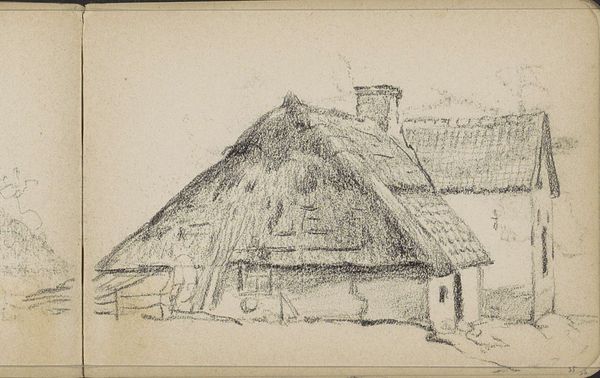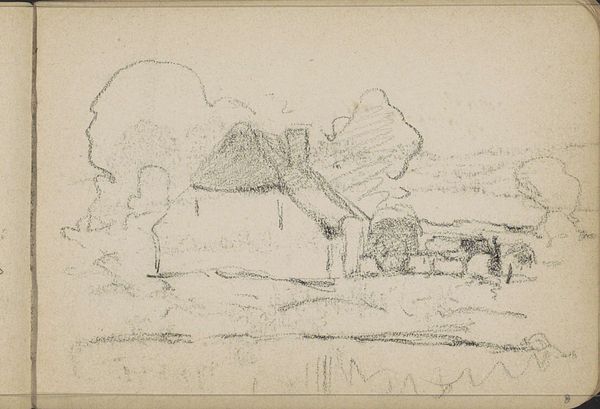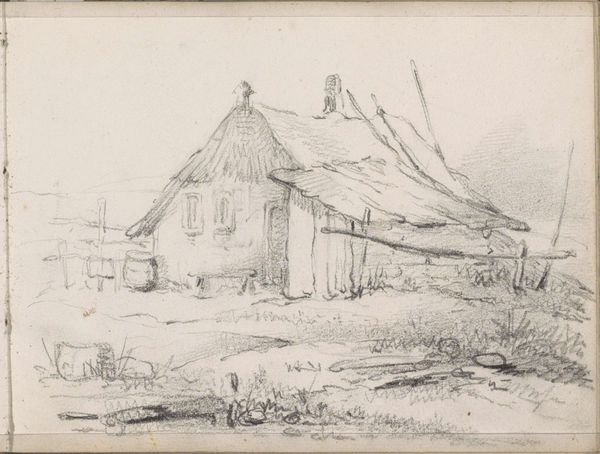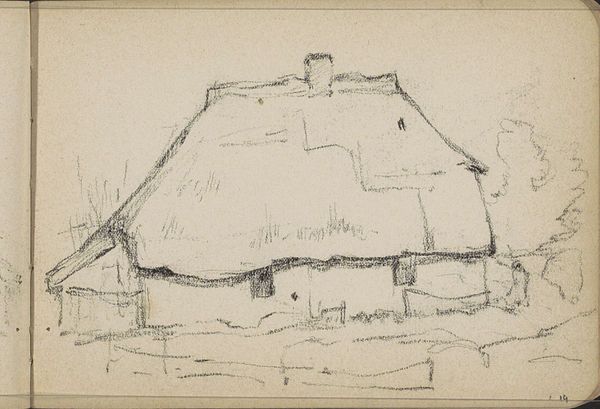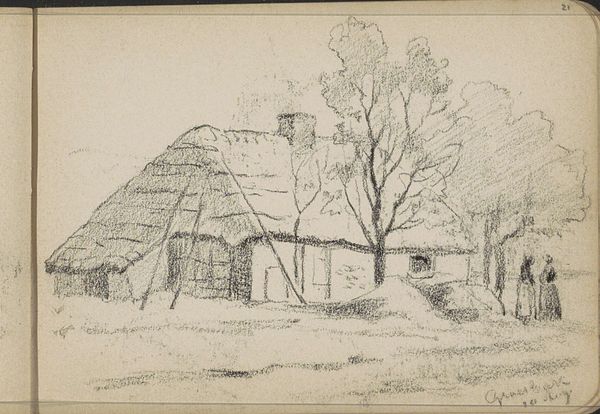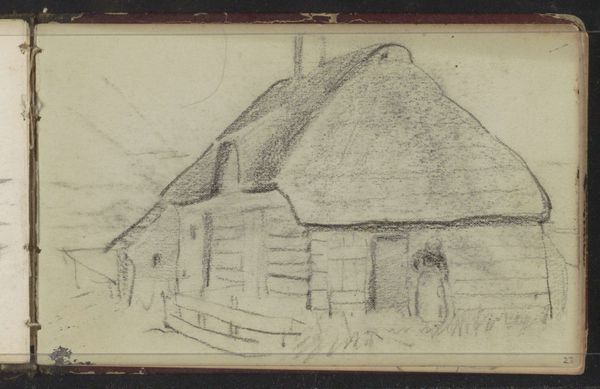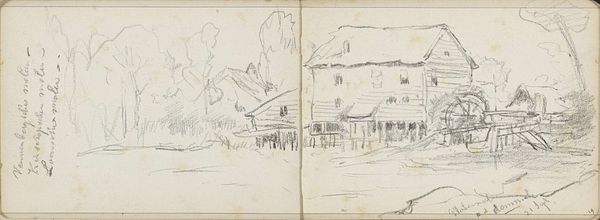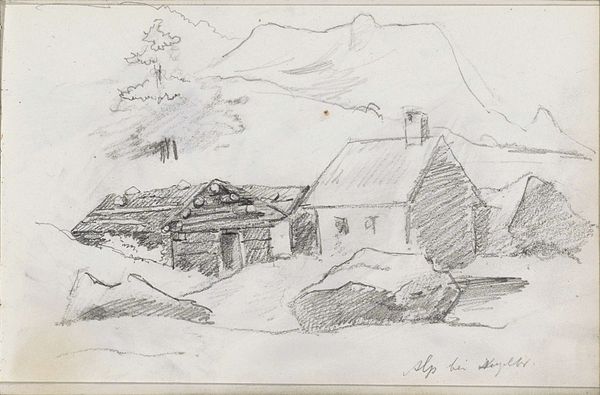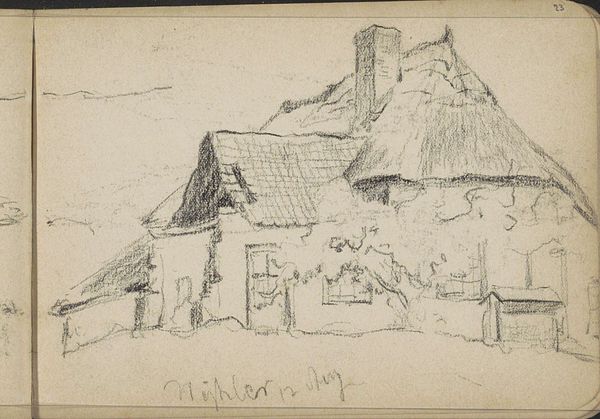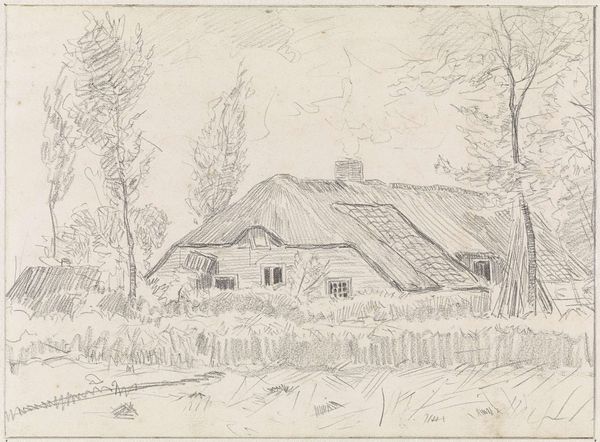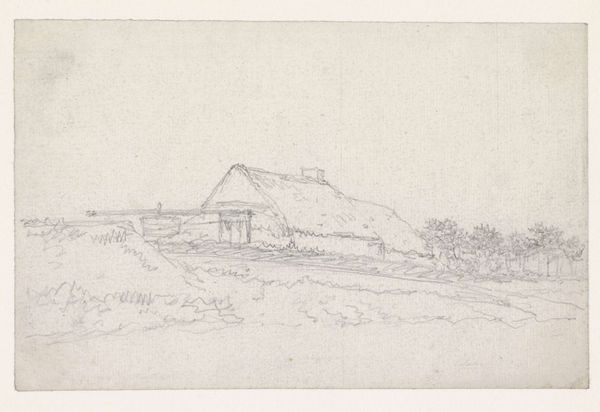
drawing, pencil
#
drawing
#
landscape
#
pencil
#
realism
Dimensions: height 113 mm, width 159 mm
Copyright: Rijks Museum: Open Domain
Curator: We're looking at Willem Cornelis Rip's "Figuren voor een boerderij te Groesbeek," a pencil drawing, likely from 1896 to 1898. It depicts a farmhouse in a landscape setting. Editor: My immediate reaction is one of rustic simplicity. The lines are sketchy, giving a sense of immediacy, and there's a quiet mood about it, almost melancholy. Curator: The choice of pencil emphasizes the raw materiality. You see the texture of the paper, the varying pressure of the graphite—it’s about the artist's hand and the direct connection to the rural environment of Groesbeek. Note the marks implying volume, the modest way this humble architecture emerges from the earth. Editor: For me, it's the imagery of home and the land that speaks loudest. The farmhouse itself acts as a central emblem, evoking a feeling of rootedness. Notice how the roof dominates the composition—protection, shelter. The windmill in the distance, too, suggests a connection to the traditional means of providing food. Curator: That connection to labor is crucial. Rip's process itself, using accessible materials like pencil and paper, democratizes art. This wasn't about high art spectacle but observing and representing the lived realities of rural labor, farming and such, within reach. Editor: Yet, even in this simple sketch, there are layered symbols. Consider the figures by the door—are they welcoming, departing? There's a suggestion of human connection and even departure and homecoming within this small rural world. What are your feelings of that open door? A harbinger for change in lifestyle and traditions? Curator: Interesting how those details contribute to its symbolic weight. For me, it grounds the drawing in its specific socio-economic moment of farming practice. By focusing on the tools and architectures of labor, he acknowledges and elevates a mode of life too often dismissed by high art and aristocratic social positionings. Editor: Indeed, a simple image brimming with meaning. It’s been interesting to consider it together. Curator: A valuable perspective for understanding art, indeed. Thanks.
Comments
No comments
Be the first to comment and join the conversation on the ultimate creative platform.
